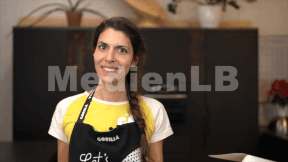 Mathematics
Mathematics

4677834 / 5564794
Bruchrechnen II
Multiplikation und Division
Die DVD beschäftigt sich mit:
1. Multiplizieren gleichnamiger und ungleichnamiger Brüche.
1.1 Einfacher, als du denkst
Gleichnamige Brüche lassen sich ohne Problem einfach addieren oder
subtrahieren, während ungleichnamige Brüche zunächst auf den
gleichen Nenner erweitert oder gekürzt werden müssen.
Beim Multiplizieren von Brüchen darfst du das getrost vergessen.
1.2 Multiplizieren von Brüchen
1.3 Multiplizieren von Brüchen mit Kürzen
1.4 Multiplizieren von Brüchen mit natürlichen/ganzen Zahlen
2. Dividieren gleichnamiger und ungleichnamiger Brüche.
2.1 Der Kehrwert / Brüche dividieren
2.2 Doppelbrüche
2.3 Bruch dividieren durch eine natürliche Zahl
Gemeinsam mit den umfangreichen Arbeitsblätter ist die DVD sehr gut zum
Einsatz im Unterricht geeignet.
Play trailer

Curriculum-centred and oriented towards educational standards
Matching
Kitchen Skills
In Zusammenarbeit mit dem GORILLA Schulprogramm gibt Ernährungscoach Anna wertvolle Tipps, die sich sofort in der Küche anwenden lassen. In einer bunten Mischung zeigt sie, wie man mit einer Zitrone Oberflächen reinigen kann, wie man Rote Beete schält, ohne dass die Hände rot werden oder auch, wie man ohne Tränen Zwiebeln schneiden kann.









